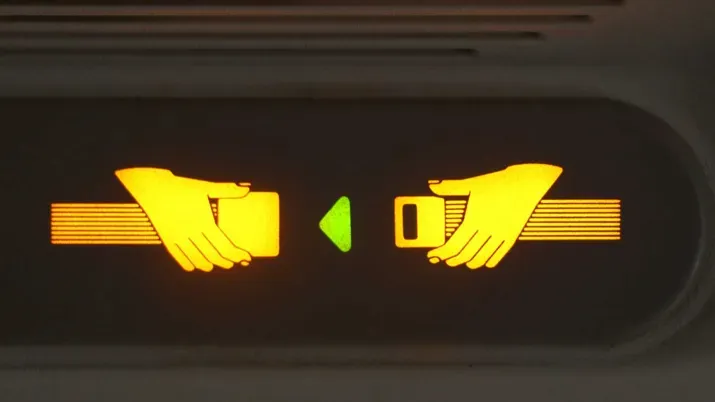Modern mining: Digging deep to find winners on the brink of a technological revolution
Quality Growth Boutique
Key takeaways
- The mining industry is entering a green supercycle, driven by demand for metals and minerals for decarbonization, with technology playing a key role in boosting productivity and reducing emissions.
- Epiroc, a leading maker of mining equipment, is at the forefront of this transformation, with a strong focus on autonomous operations and electrification, and a significant aftermarket presence.
- Despite challenges such as increased competition, we believe Epiroc's aggressive push into new technologies and close customer relationships could position it well for the future.
The mining industry has a reputation for being cyclical and short on quality, with supercycles that can last 15-20 years. The last great supercycle was driven by China and reached peak steel demand around 2020. Some believe the next supercycle is already upon us – and this one is green, driven by demand for the metals and minerals needed to decarbonize the global economy.
At the same time, the mining industry is becoming even more competitive. Few new mines are being opened globally and the time to obtain a new mining permit typically exceeds a decade. Mining companies now have to dig deeper, particularly for gold and copper. This puts a premium on equipment that can bring raw material to the surface faster and handle the conditions of working deep underground.
Sophisticated software is now being used to boost productivity, enhance safety, and reduce greenhouse gas emissions in the mining industry. This technological transformation coincides with an exciting era of electrification, where more copper, nickel, and other rare minerals are required to produce batteries and the infrastructure to support the drive to net zero.
As Mark Twain remarked: “During the gold rush, it is a good time to be in the pick and shovel business.” Over a century on, the tools are very different, but the opportunity is just as compelling. For investors, the key question is: how do you identify the best long-term opportunities in this cyclical space?
There’s no substitute for on-the-ground research
At Quality Growth, we intensely analyze data, dig deep into company balance sheets, and develop a keen understanding of industries. But we also believe there is no substitute for talking to people on the ground. Our investigative analysts are constantly on the road, uncovering insights that cannot be found online. You can read more about how they add value to our investment process and help us avoid the perils of groupthink here.
Rob Berner, one of our investigative analysts, recently travelled to Las Vegas, not to try his luck, but to participate in MINExpo, the world’s largest convention of mining equipment makers. He also attended the capital markets day of Swedish-based Epiroc.
Epiroc is a leading maker of underground mining equipment, and below and above-ground drilling equipment for blast holes. At the convention, Rob met with Epiroc’s CEO and over 20 members of the company’s senior team. He also talked with the company’s customers, partners, and rivals.
Epiroc’s niche in an evolving industry
Epiroc has the highest operating margin in the mining equipment space, ahead of its Swedish rival, Sandvik. US-based Caterpillar and Japan’s Komatsu have smaller shares underground but are leaders above ground.
Mining equipment makers win new business by replacing legacy equipment with more advanced machinery. They also grow by entering new niches, such as software, to improve the efficiency of mines or avoid collisions above and below ground. Epiroc’s strategy, in a nutshell, is to enable the mining industry to increase productivity, thanks to its leading position in the two biggest trends:
1. Expanding its autonomous operation
Autonomous operating is the fastest-growing trend in mining, driven by labor shortages and the need to protect people from increasingly extreme underground conditions. Epiroc is also unique in that it automates and remotely controls its own equipment, as well as that of other vendors. At MINExpo, Rob concluded that Epiroc’s rivals appear to be less advanced in the number of mines covered.
Epiroc has even gone above ground with a completely autonomous system for controlling mixed fleets of earth movers, even though it only makes above-ground drills. Most mine operators prefer to use a variety of equipment manufacturers, so they are not tied to one in particular. Even if a mine is not using Epiroc equipment, it can use the Epiroc autonomy system to control other manufacturers’ machinery. This means the company is expanding its footprint within a mine, which can help drive future sales.
2. Pushing the boundaries of electrification
Electrification presents a significant market opportunity, with 80% of mine fleets expected to be electrified by 2030. And while the adoption of electric vehicles is still in its early stages, the technology is ready for the field, and it’s only a matter of time before it becomes the industry standard. In this major trend, Epiroc appears to be leading the pack.
Mines need electric vehicles as they go deeper because of increased heat at greater depths, and the difficulty and expense of ventilating carcinogenic diesel fumes. Trolly-like systems can power battery and hybrid haulers up the inclines, where the greater torque of an electric motor can drive faster and carry heavier loads than diesel. At the same time, they reduce heat and fume ventilation expense.
In early 2024, Epiroc partnered with an ore mine in Sweden to build a trolly system, with the company’s next task being to fully automate all the mine’s haulers. CAT, Komatsu, and Sandvik are heading in the same direction, but others in the industry see Epiroc as having the edge.
Aftermarket presence and strength in exploration are differentiators
Epiroc’s aftermarket – including service agreements and equipment rebuilds – accounts for 64% of sales, one of the highest in the equipment space. This builds customer relationships, increasing future sales prospects, while keeping the competition at bay. Epiroc also largely sells direct to be closer to the customer, versus a competitor like CAT, which handles sales and services through its dealers.
Growing complexity in electrification and automation also plays to Epiroc’s favor. Customers need service contracts and collaboration with Epiroc to work with cutting-edge technology, which boosts those relationships even further. It also squeezes out local service providers that can easily handle diesel equipment, but not more advanced electrified technology, according to Hedblom.
Epiroc also has growing strength in the exploration business, with above-ground drilling equipment to take samples and cores. While new mine growth is currently negligible and gaining permits is slow, the projected deficits in such critical minerals as copper and gold is driving new interest in exploration. That will boost Epiroc’s exploration business and, longer term, could lead to a virtuous cycle of mine growth and advanced equipment sales.
But Epiroc’s future is not without challenges
The company has diversified into infrastructure construction, which accounts for 19% of orders received, although business has slowed and put pressure on Epiroc’s stellar operating margins. Epiroc bought Stanley Infrastructure in 2024, an excavator attachment and hydraulic tools business, from Stanley Black & Decker. Unlike underground mining machinery, there are many suppliers in this less-complex space, which in turn makes it harder to win service agreements. While Epiroc is bullish on the long-term prospects of construction, the reality is that it is a latecomer to construction in a market where it does not enjoy the core competency that it does in underground mining. We think this is a risk and that this business could continue to pull down results.
Growing competition is another threat. Rivals are not far behind Epiroc in autonomy and electrification, while CAT and Komatsu are large global players that cannot be underestimated – their growing expansion into underground equipment could come at the expense of Epiroc and Sandvik. Newer Chinese manufacturers are also looking to gain international share. At the same time, manufacturer agnostic pureplays are entering the mine operation software and automation market, including Hexagon and Flanders. While Epiroc has automated the CAT and Hitachi haulers at the Roy Hill mine, that is not the case for the 14 above-ground Epiroc drills which run on Indiana-based Flanders’ software. For now, it appears that Flanders’ system can drill faster and handle more drills.
At the bottom of all the digging, we maintain conviction in Epiroc
In a competitive industry with such a large prize at stake, Epiroc starts with a strong advantage in underground equipment. It has pushed aggressively into autonomy and electrification, which is bearing fruit today. It also has strength in exploration, which could yield results and advantage well into the future. It places great importance on its aftermarket business and getting close to its customers. And it has high-quality leadership and management depth.







